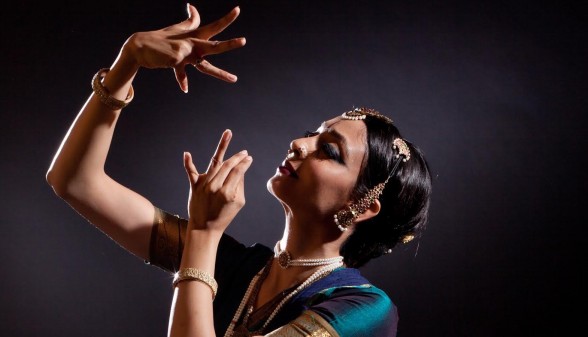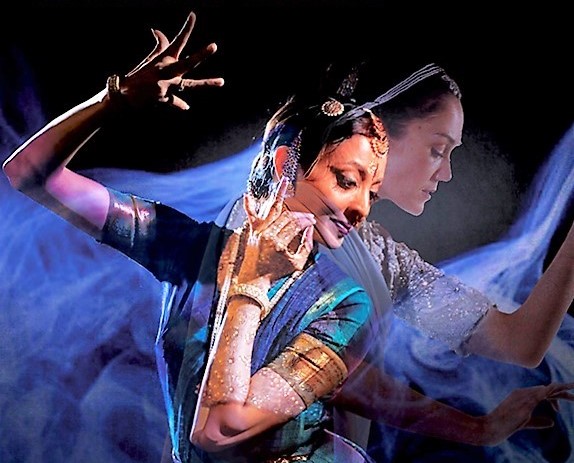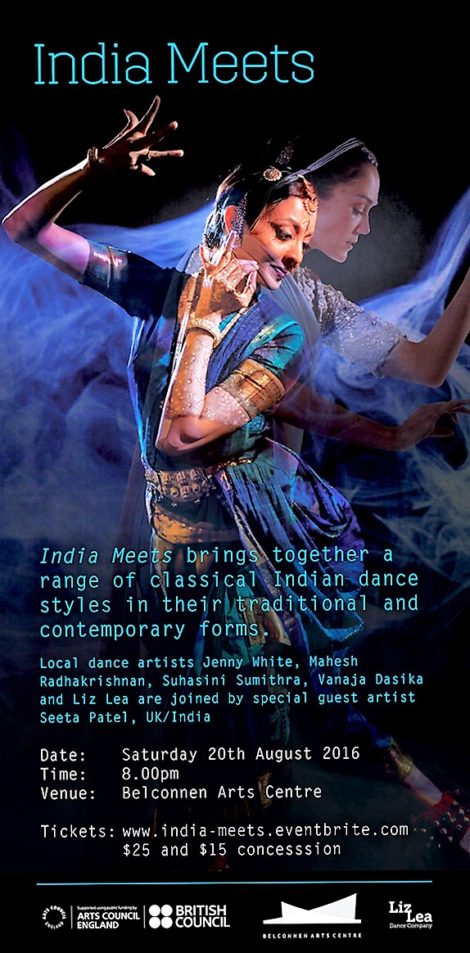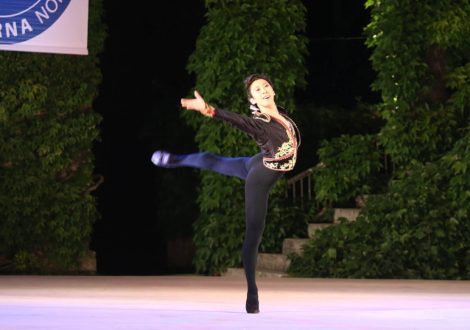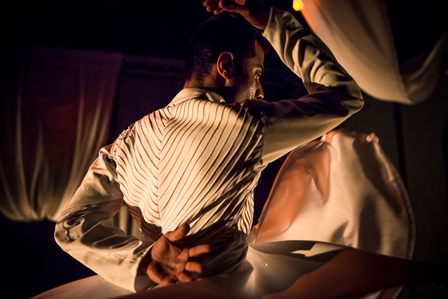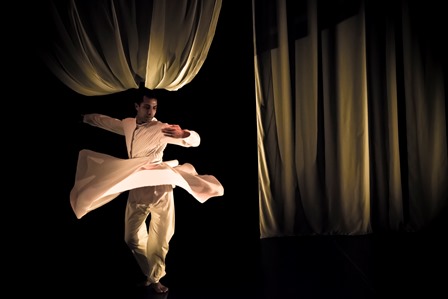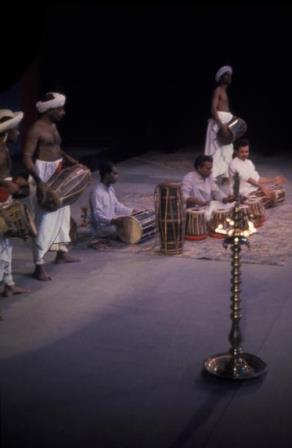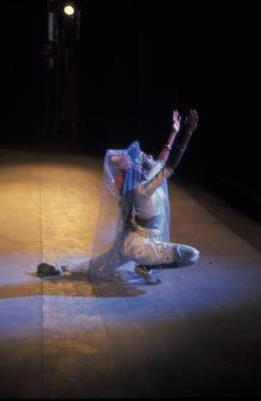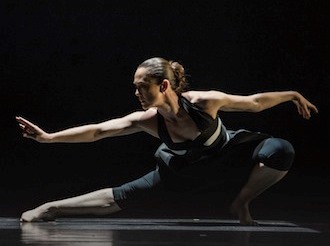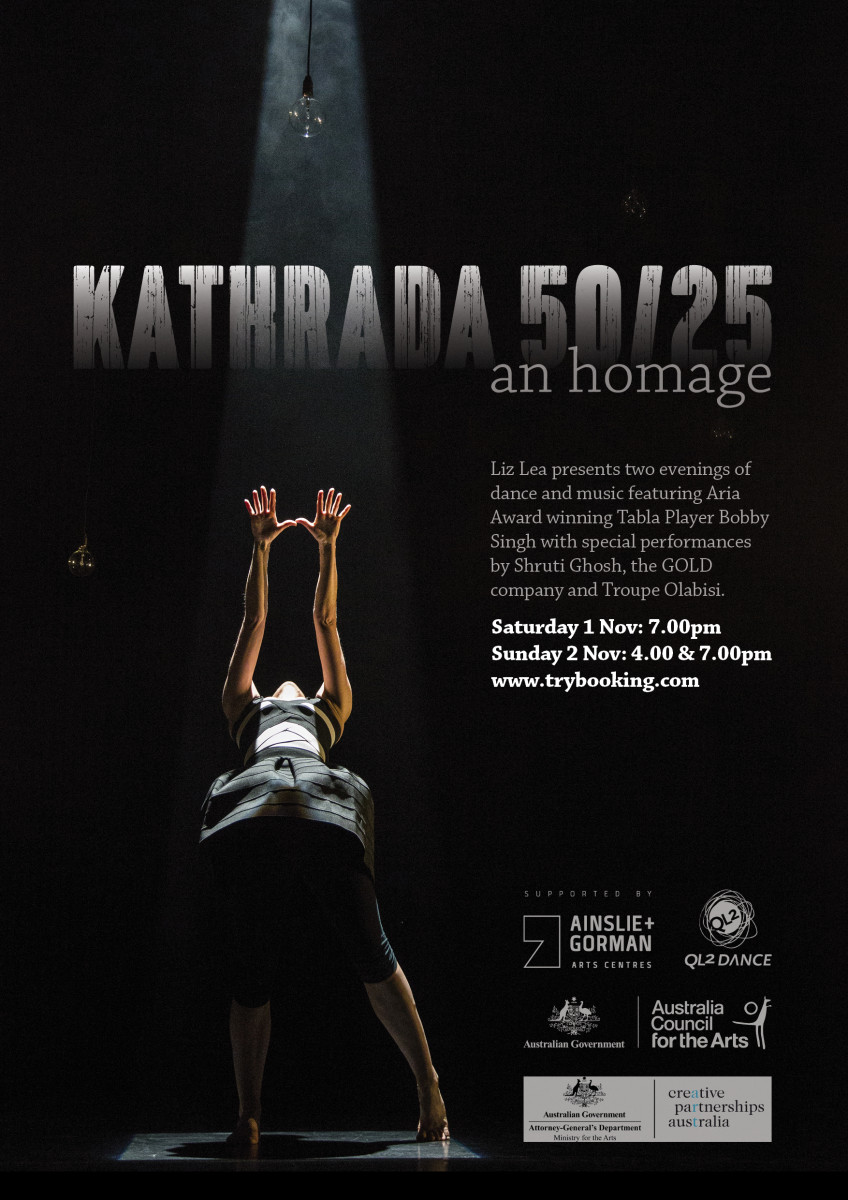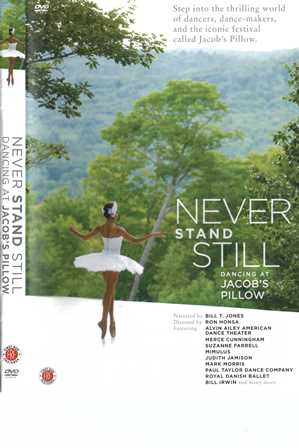British Indian dancer, Seeta Patel, specialises in the Bharata Natyam style of classical Indian dance and she will be in Canberra in August to work on two projects. The first is a workshop with Canberra Dance Theatre’s GOLDS, the second a one-off performance at Belconnen Arts Centre. When I spoke to her, however, she was in Mt Gambier, South Australia, working with choreographer Lina Limosani on yet another project. Prior to that she spent time a week of intensive work in Sydney with Liz Lea.
Patel worked with Lea on refining her Bharata Natyam technique. Bharata Natyam was a major part of Lea’s practice for many years before she came to Australia but, since arriving in Canberra in 2009, Lea has had little opportunity to work on this aspect of her practice. She has instead concentrated on community dance, including the successful establishment of the GOLDS, and on other areas of her practice, including works made as a result of historical research, such as 120 Birds, which took the travels of Anna Pavlova as its starting point. Patel has re-energised her and brought her back to her Bharata Natyam practice.
‘With recent changes in my career,’ Lea says, ‘I have wanted to return to my own practice and to the Bharata Natyam style. The sessions with Seeta reawakened my deep love for the form, and my deep respect. It is so very difficult and challenging, mentally and physically. Working with Seeta was also quite an adventure. At the end of each day I could scarcely walk!’
Lea also acknowledges Patel’s strengths as a performer at the cutting edge of the growth and development of Bharata Natyam as a contemporary art form for today’s audiences. Patel has worked with several British contemporary dance companies, including DV8 and David Hughes Dance, which she says taught her to use her performance skills in a different way.
‘It is challenging to develop the ability to move across forms and to engage in cross-cultural work,’ Patel says. ‘It is a reminder not to reduce Bharata Natyam to something simplistic, but to find what is inherent in it.’
Patel’s work at Mt Gambier with choreographer Lina Limosani, who works in a contemporary style and who, in 2015, was awarded the Peggy van Praagh Choreographic Fellowship, highlights Patel’s interest in cross-cultural, cross-form work. Her three week residency in Mt Gambier, supported by Country Arts South Australia, saw Patel not only conducting workshops but also working with Limosani and dramaturg Dagmara Gieysztor on a new contemporary work Not Today’s Yesterday.
Now Patel is working on ways to secure funding to bring Limosani and Gieysztor to England to complete the work they have started and have it tour globally.
For India Meets, the one-off performance at Belconnen Arts Centre on 20 August, Patel will perform a small solo drawing on elements of Bharata Natyam technique. It will be a ‘short work’, athough she suggests that her interest lies in the ‘long form with live music’. Her post-forum discussion may well draw out more on this topic. Lea will also perform, along with several other Canberra-based dance artists. Lea says her work will be informed by her intensive work with Patel but it will not be purely traditional Bharata Natyam.
‘I will be exploring,’ Lea says, ‘a conversation between Einstein and Rabindranath Tagore that took place in 1930. It relates to my ongoing exploration of previous relations between East and West, and my new enquiries into science and astronomy.’
Michelle Potter, 10 August 2016
